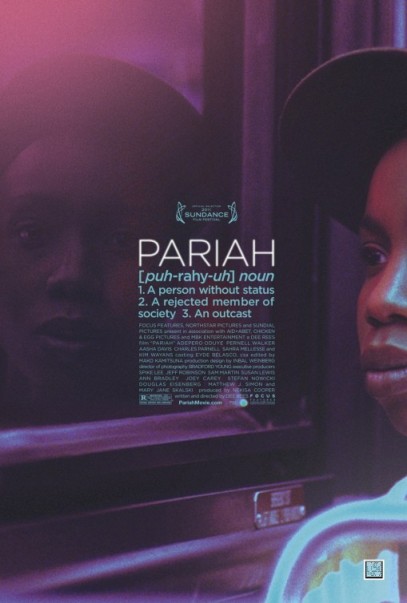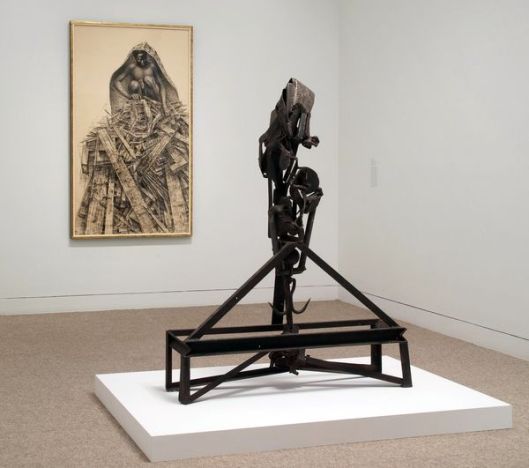Tags
Aasha Davis, Adepero Oduye, Charles Lloyd, Dee Rees, Dominique DiPrima, Guthrie Ramsey, jason moran, Kim Wayans, Now Dig This, Pariah, Sarah Johnson, Stevie Wonder, The Colored Waiting Room, The Front Page, The Hammer Museum, WKJH
 Landing in JFK and transitioning after a trip to Los Angeles, the land of big dreams and steady paradise, requires a little re-orientation. A twenty-degree shift in temperature measured both in Fahrenheit and attitude—is always an unkind jolt. But after a little pushing and shoving at baggage claim, a grimy train to the grimy parking lot to the grimy car to the grimy highway, a quick chat about the publishing world with my beat-chick mom-n-law from the G-Village, a power nap in the passenger seat during a traffic snarl, some re-heated takeout, “yous” settle in and reflect on your time in the sunshine noire of the Left Coast.
Landing in JFK and transitioning after a trip to Los Angeles, the land of big dreams and steady paradise, requires a little re-orientation. A twenty-degree shift in temperature measured both in Fahrenheit and attitude—is always an unkind jolt. But after a little pushing and shoving at baggage claim, a grimy train to the grimy parking lot to the grimy car to the grimy highway, a quick chat about the publishing world with my beat-chick mom-n-law from the G-Village, a power nap in the passenger seat during a traffic snarl, some re-heated takeout, “yous” settle in and reflect on your time in the sunshine noire of the Left Coast.
There was much to reflect on.
The special screening of the new independent film Pariah inspired on a number of levels. A Focus Features release that was critically acclaimed at the Sundance Film Festival, it opens in select theaters nationally on December 28. The story depicts a coming out and coming of age story of a young woman finishing high school. She just happens to be black and a talented and quickly developing poet. Director and writer Dee Rees’ breakout film stars Adepero Oduye and Kim Wayans (playing her mother) together with a brilliant ensemble cast whom all bring believability to a story of courage, fear, beauty and ugliness. Complex characters abound in this film bereft of the cartoonish, stereotypical figures that often lavish films with majority black casts. None of the main characters are “settled” into any stereotypical groove in particular—each one questioning and searching for an illusive “comfort zone” in the larger scheme of things.
I was particularly interested in the how music in the film (none of which I believe was written specifically for Pariah) worked to illuminate the main character Alike’s journey into self-actualization. The compiled score features some of the stunning music of Tamar-kali, a black female artist who ventures into many genres including punk and rock. Moving in and out of diegetic and extra diegetic narrative positions, the alternative rock element is introduced to Alike’s by a love interest, Bina (played by Aasha Davis). Because “non-black” extra diegetic music is used to score her inner-subjectivity even before she’s formally introduced to genres marked as “bohemian,” we are encouraged to consider her complex and emerging identity as marginal to not only her family but also to the salacious culture of after-hours strip clubs in which we meet her at the beginning of the film. Speaking to Ms. Wayans after the screening, the comedic actress expressed joy about being able to demonstrate her formidable dramatic skills in a movie that runs against many grains. It showcases a storyline that through nuance and detail (and not to mention superb acting) highlights the universality of “becoming,” of the need for acceptance, and the shape shifting quality of margins and centers.
A brutal 5:00 am call time had me on the freeway en route to KJLH to chat with host/producer Dominique DiPrima of the classic talk show The Front Page. What’s cool about the program, which also streams online from 4:30am-6:00am PST, is how its community of activist-minded listeners constantly call in to express views, debate a topic, shout out to heroes or critique perceived enemies. Ms. DiPrima rocks in this forum, deftly forwarding her own vision of spiritual, economic, political and cultural empowerment to her devoted listeners. I was on the show to talk about my new CD project The Colored Waiting Room and Jason Moran’s appearance that night at the Hammer Museum at which I would interview him.
On the way to the station, at 4:30 in the morning, Stevie Wonder’s song from 2005 “Moon Blue” came on. Its delicate though powerful compositional structure buttress Stevie Wonder’s intensely personal and playful vocal virtuosity that wind through the verses and choruses. An enticing study of time, timbre, and instrumental (analogue and digital) mimicry, the piece was on my mind during the interview. I took the opportunity to explain to listeners why I found the song so moving. Songs from my 2007 recording were played as well. It was a very enjoyable time responding to listeners but went over the top when Stevie Wonder himself called into the station at the end of the show to request one of my CDs. Umm, like, incredible experience. But more than Stevie’s reaching out, what’s really impressive is that The Front Page reminds me of how radio used to be: in tune with a local community and serving with intelligence, integrity and purpose beyond corporate formulas and outmoded slap stick antics posing as ethnic bonding.
“Conceptual” pianist Jason Moran performed at the Hammer Museum that evening as part of the programming for the exhibition Now Dig This! Art and Black Los Angeles, 1960-1980. I was on-hand for an after-concert interview/discussion. To call Moran simply a jazz pianist is to surrender lazily to a somewhat narrow labeling process that serves little purpose but to limit the expressive horizon of musicians. True, he can, at any given moment embody jazz gestures and sonic rhetoric but, as he demonstrated at the concert, there’s more swimming below the surface of his art. His work included the use of recordings from a Mac computer with which he engaged as invocation, as bandmate, as foil, as counterpoint and as context. Relaxed and telling stories, one got the feeling of being with a trusted guide of previously unexplored soundworlds. Joined for two numbers by Sarah Johnson, a brilliantly gifted young flautist and composer, the evening turned “high life” at the museum into a cozy family affair: she’s his cousin.
For me that act of human connection is what makes Mr. Moran’s music compelling. There’s a sense that no matter how challenging his musical deconstructions and variations on the American musical landscape feel at first brush, his purpose is to touch something in his listeners, indeed, to channel his vision to us with kind patience. For all of his sly juxtapositions, incongruent gestural references and palimpsest-like sonic arrangements there’s, at bottom, a guy that really wants you to dig what he’s saying. It might just take a moment.
And, by the way, as a cherry on top of my big week there, the exhibition Now Dig This! was named “Best in Art” of 2011 by the LA Times. The Left Coast got it going on, and I do dig that!








always a treat to hear Jason Moran play live… he is a true modern artist. thanks for posting
Nice piece………….thanks for sharing
Look forward to seeing you in the future !
Peace and Best Wishes
Dale